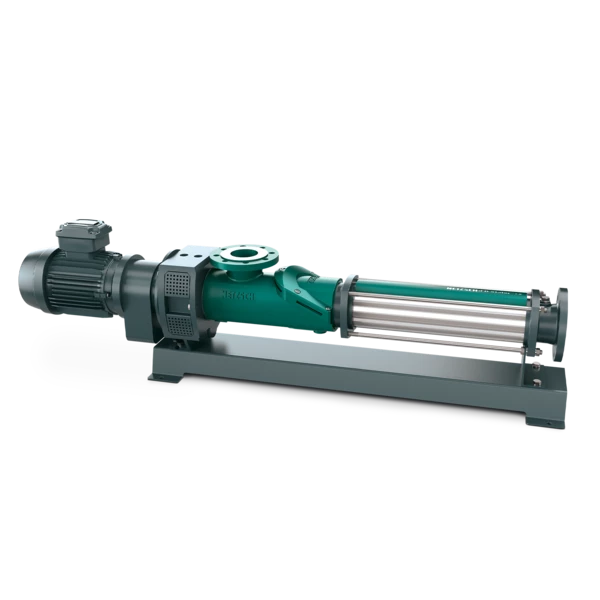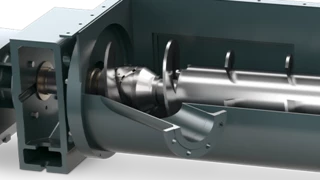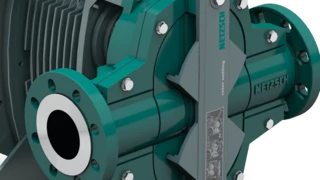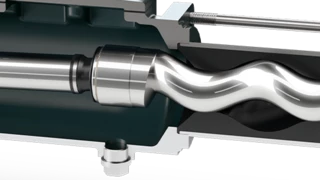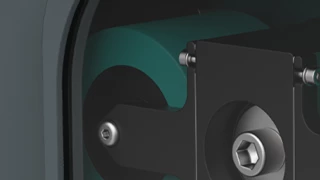sludge
Sewage Sludge Pumps: Time and Cost Savings Through Maintenance-Friendly Design
NEMO® progressing cavity pump reduces maintenance time up to 66 percent
Sewage treatment plants worldwide are faced with the challenge of dewatering the sewage sludge to reduce the volume or mass and thus make the product reusable. As a global specialist in the field of environment and energy, NETZSCH offers you pumps and systems optimized to your requirements for conveying sewage sludge.
We will show you how to pump sewage sludge without interruption and, at the same time, achieve savings by using the particularly maintenance-friendly NEMO® progressing cavity pump in FSIP® design.

Individual Consulting
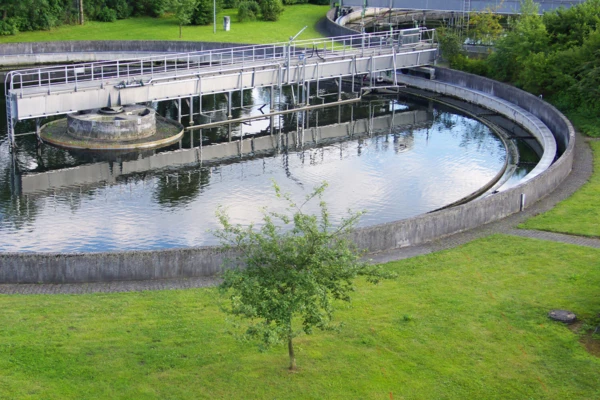
Sewage sludge pumps: How to save an additional pump
Sewage sludge is a waste product of wastewater treatment in sewage treatment plants and consists of water, organic, and mineral substances. The composition of the product and the high solids content poses significant challenges for pumps and systems. The high proportion of organic and mineral substances makes uninterrupted pumping very difficult. A regional water supplier in northern Italy used two conventional progressing cavity pumps for this purpose. One of the two pumps was used to convey sewage sludge into the centrifuge, while the second was permanently in standby mode to stand in for breakdowns or maintenance work. This resulted in high costs for the operator.
Preventing long downtimes when pumping sewage sludge
For conventional progressing cavity pumps, maintenance of the conveying elements had required a relatively large amount of effort. In order to remove the rotor and stator, you had to dismantle the whole pump from the pipework. Replacing the conveying elements meant removing the end connection, pulling the stator off the rotor and dismantling the sucker rod string. When positioning the pump, this dismantling length therefore had to be taken into account and sufficient room at the front kept clear. Any major work on the pump was thus accompanied by extended downtime, lost production and personnel costs.
Up to 25 percent energy savings when pumping sewage sludge
To save the stand-by unit for the cost efficiency of the plant and at the same time ensure an almost uninterrupted loading of the centrifuge with sewage sludge, NETZSCH recommended the replacement of the conventional pumps with an innovative NEMO® progressing cavity pump in FSIP® design (Full Service-in-Place). This means that the pump must not be removed from the sewage treatment plant to replace the rotor and stator. This reduces your maintenance times by up to 66 percent and so saves resources and costs. To open the inspection cover of the sewage sludge pump, only five screws are required, which can be loosened in no time without special tools. After removing the cover, loosening one screw to separate the rotor-stator element from the coupling rod is sufficient. The rotating unit can be lifted out, and the pump interior is freely accessible. The additional replacement length is a thing of the past. This makes the pump particularly suitable for confined spaces in sewage treatment plants.
In order to increase the system’s cost efficiency by using only one unit in future and to still ensure uninterrupted continuous operation, NETZSCH recommended the replacement with the FSIP® design of the NEMO®progressing cavity pump. We are therefore talking about the “Full Service-in-Place” concept, because the pump does not have to be dismantled from the pipework. Maintenance work takes a significantly shorter time and resources as well as costs are reduced. The special inspection cover is secured by just five screws that can be removed without any special tools at all in a really short time. After removing the cover only one screw needs to be removed to separate the rotor-stator element from the coupling rod. The rotating units can then easily be lifted out, and the pump interior is freely accessible from flange to flange. The additional dismantling length is no longer required.
Any wearing part can be replaced in less than half the previous time and customary performance can be maintained in spite of easier maintenance. To work in a particularly easy and resource-efficient way the new pump design can be combined with the iFD-stator® 2.0. This involves a stator system where the elastomer is not vulcanized into the housing, as is otherwise common, but is fixed by axial compression. By separating the steel sleeve and elastomer stator, the latter can be quite easily removed along with the rotor. This makes maintenance even easier. This solution also increases the cost effectiveness of the system: During the entire conveying process roughly 25 percent less energy is consumed and the drives of the pumps can have correspondingly smaller dimensions. Moreover, because of the lower load, the stators last approximately twice as long – in conjunction with simple maintenance of the FSIP® concept, downtimes are reduced to a minimum.
NEMO® progressing cavity pump in FSIP® design
- Product: Sludge
- Throughput volume: 10 to 55 m³/h
- Rotations speed: 58 to 287 rpm
